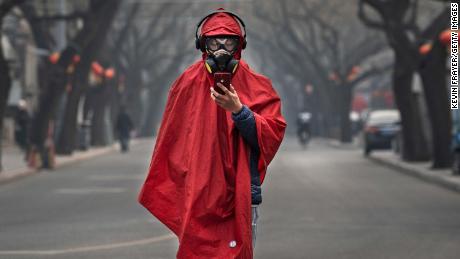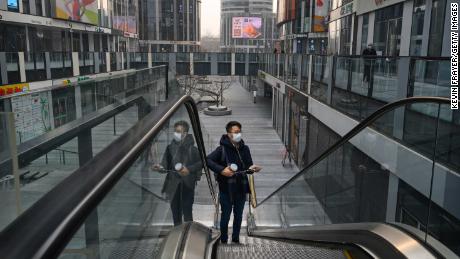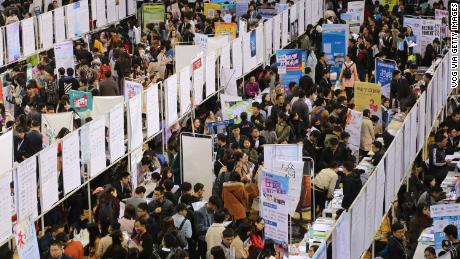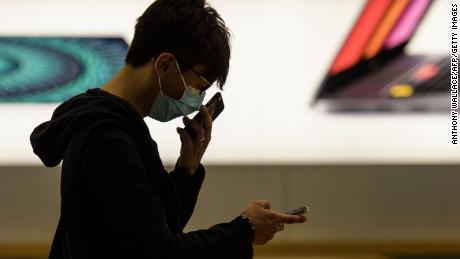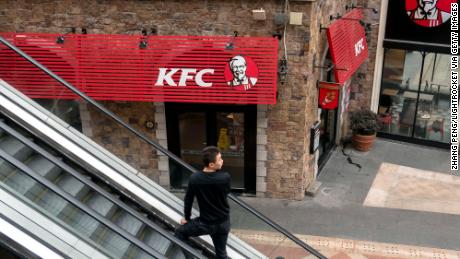Economy
The coronavirus could cost China’s economy $60 billion
|
|
The economic impact of the virus is still impossible to determine, but one state media outlet and some economists have said that China’s growth rate could drop two percentage points this quarter because of the outbreak, which has brought large parts of the country to a standstill. A decline on that scale could mean $62 billion in lost growth.
China can ill afford that kind of hit. Growth last year was already the country’s weakest in nearly three decades, as China contended with rising debt and the fallout from its trade war with the United States.
The coronavirus, which first appeared in the central city of Wuhan, has already killed more than 200 people and infected more people than the SARS outbreak in 2003. A disease of this magnitude wasn’t even on China’s radar. Before the outbreak, the government was more worried that social unrest could be its “black swan” problem — an improbable but chaotic event officials feared could be spurred by rising unemployment.
Now Beijing is scrambling to stop the virus from cratering its economy. The ruling Communist Party recently put Premier Li Keqiang in charge of virus control. The decision was a clear signal that stopping the virus is “the priority among priorities” for the government right now, the official People’s Daily newspaper wrote in a recent commentary.
So far, policymakers have taken some steps to help the businesses that are most affected by the rapid spread of the disease.
Central and local governments have allocated $12.6 billion so far to spend on medical treatment and equipment.
Major banks have cut interest rates for small businesses and individuals in the worst-hit areas. And the Bank of China said it would allow people in Wuhan and the rest of Hubei province to delay their loan payments for several months if they lose their source of income because of the disruption.
The People’s Bank of China, the country’s central bank, has said that it will ensure there is enough liquidity in the financial markets when they reopen next Monday after a 10-day Lunar New Year holiday. When Hong Kong’s markets reopened earlier this week, the Hang Seng index (HSI) plunged nearly 6% in just a few days of trading.
Aggressive action
The government will likely have to be even more aggressive in the coming months to avert a more serious slowdown, according to Chinese economist Zhang Ming.
Zhang, who works at the Chinese Academy of Social Sciences, wrote this week that he expects economic growth to slump by a percentage point to 5% in the first quarter, assuming the epidemic lasts until the end of March. He described that as his most optimistic scenario, but didn’t give a specific forecast should the outbreak last even longer.
The government could cut taxes and boost spending on public healthcare and employment training, Zhang said. He also expects local governments to spend more on infrastructure. By boosting economic activity and creating jobs, he added, cities can offset any weakness in private investment in real estate and manufacturing.
The central bank is also likely to deliver more interest rate cuts to stabilize the economy, Zhang said. Altogether, he said such measures could help growth rebound next quarter and push annual GDP growth to around 5.7%. While that’s lower than last year’s 6.1% growth, it would be in line with many analyst expectations.
Others take a more pessimistic view.
Analysts at Nomura believe growth could drop by two percentage points or more in the first quarter. The Global Times, a state-run tabloid, wrote Friday that the outbreak could shave two percentage points off GDP growth this quarter, citing industry insiders. Government’s efforts to contain the virus by extending Lunar New Year holidays and forcing factories to shut down could “take a piece out of the nation’s manufacturing industry and disrupt the global supply chain.”
Measuring the fallout
It’s too early to say whether that level of upheaval is on the horizon. Tesla (TSLA) has been forced to close its new Shanghai-built factory temporarily. And Apple (AAPL) has lost production from suppliers in Wuhan. The longer term impact on both companies is much less clear.
Other sectors might have more to lose right now. Tourism — a multibillion-dollar industry during the Lunar New Year — has been decimated as the government quarantines major population centers and people avoid traveling for fear of becoming infected. Major travel companies, hotels and airlines have offered refunds through most of February, while some airlines have suspended services to and from China.
Holiday celebrations have been canceled and major tourism spots have been closed off. China’s massive box office will also likely take a hit after several blockbuster movies set to release during the holiday season were pulled.
Zhang and other analysts suggested that the fallout could even be more serious than after SARS, the respiratory disease that caused China’s economic growth to briefly plunge before rebounding nearly two decades ago.
The spread of the coronavirus threatens to cause job losses and push consumer prices higher, compounding economic woes that already exist.
The employment market is already under stress this year. Industries that traditionally create a lot of jobs, like the technology sector, have been hurt by the economic slowdown. The coronavirus outbreak will make things worse, according to Zhang.
China’s 290 million migrant workers are among those most exposed to a slump. Many of them travel from rural areas to the cities to take on construction and manufacturing jobs or perform low paying but vital work, such as waiting tables in restaurants, delivering packages or acting as janitors.
But because many factories and businesses remain shut down, millions of those workers might find it hard to land a job after the extended Lunar New Year holiday ends. More than 10 million migrant workers from Hubei province alone might also face discrimination from employers fearful that they may spread the virus.
Zhang warned that China’s unemployment rate — already a concern for officials — could reach a record high in the coming months. The rate traditionally has hovered around 4% or 5%.
He added the virus could also make consumer goods more expensive. Budgets are already tight because of rising debt, and a pork crisis brought on by the outbreak of African swine fever among China’s pigs last year has caused the price of meat to skyrocket. Now vegetable prices have risen as people rush to buy basic necessities during the virus outbreak, according to the state news agency Xinhua.
Other challenges
Dealing with the disease will make some of China’s other problems that much tougher to solve — including its tricky trade relationship with the United States.
As part of a truce reached earlier in January, Beijing agreed to buy $200 billion worth of US products in the next two years. Analysts have already said that shrinking domestic demand in China will make it tough for the country to hit those targets. If the virus weakens the country’s buying power even more, those goals could move even further out of reach.
Substantial tariffs totaling hundreds of billions of dollars also remain in place on many Chinese goods. And Washington has made it clear that those will remain a form of leverage as the two sides negotiate the next phase of their agreement.
Even so, at least one analyst finds it unlikely that the trade war will escalate just because China is “temporarily” unable to honor its trade commitments. The United States is in an election year, and such an action could jeopardize President Donald Trump’s campaign, said Ken Cheung, chief Asian foreign exchange strategist at Mizuho Bank.
Economy
China Wants Everyone to Trade In Their Old Cars, Fridges to Help Save Its Economy – Bloomberg


China’s world-beating electric vehicle industry, at the heart of growing trade tensions with the US and Europe, is set to receive a big boost from the government’s latest effort to accelerate growth.
That’s one takeaway from what Beijing has revealed about its plan for incentives that will encourage Chinese businesses and households to adopt cleaner technologies. It’s widely expected to be one of this year’s main stimulus programs, though question-marks remain — including how much the government will spend.
Economy
German Business Outlook Hits One-Year High as Economy Heals – BNN Bloomberg


(Bloomberg) — German business sentiment improved to its highest level in a year — reinforcing recent signs that Europe’s largest economy is exiting two years of struggles.
An expectations gauge by the Ifo institute rose to 89.9. in April from a revised 87.7 the previous month. That exceeds the 88.9 median forecast in a Bloomberg survey. A measure of current conditions also advanced.
“Sentiment has improved at companies in Germany,” Ifo President Clemens Fuest said. “Companies were more satisfied with their current business. Their expectations also brightened. The economy is stabilizing, especially thanks to service providers.”
A stronger global economy and the prospect of looser monetary policy in the euro zone are helping drag Germany out of the malaise that set in following Russia’s attack on Ukraine. European Central Bank President Christine Lagarde said last week that the country may have “turned the corner,” while Chancellor Olaf Scholz has also expressed optimism, citing record employment and retreating inflation.
There’s been a particular shift in the data in recent weeks, with the Bundesbank now estimating that output rose in the first quarter, having only a month ago foreseen a contraction that would have ushered in a first recession since the pandemic.
Even so, the start of the year “didn’t go great,” according to Fuest.
“What we’re seeing at the moment confirms the forecasts, which are saying that growth will be weak in Germany, but at least it won’t be negative,” he told Bloomberg Television. “So this is the stabilization we expected. It’s not a complete recovery. But at least it’s a start.”
Monthly purchasing managers’ surveys for April brought more cheer this week as Germany returned to expansion for the first time since June 2023. Weak spots remain, however — notably in industry, which is still mired in a slump that’s being offset by a surge in services activity.
“We see an improving worldwide economy,” Fuest said. “But this doesn’t seem to reach German manufacturing, which is puzzling in a way.”
Germany, which was the only Group of Seven economy to shrink last year and has been weighing on the wider region, helped private-sector output in the 20-nation euro area strengthen this month, S&P Global said.
–With assistance from Joel Rinneby, Kristian Siedenburg and Francine Lacqua.
(Updates with more comments from Fuest starting in sixth paragraph.)
©2024 Bloomberg L.P.
Economy
Parallel economy: How Russia is defying the West’s boycott
|
|


When Moscow resident Zoya, 62, was planning a trip to Italy to visit her daughter last August, she saw the perfect opportunity to buy the Apple Watch she had long dreamed of owning.
Officially, Apple does not sell its products in Russia.
The California-based tech giant was one of the first companies to announce it would exit the country in response to Russian President Vladimir Putin’s full-scale invasion of Ukraine on February 24, 2022.
But the week before her trip, Zoya made a surprise discovery while browsing Yandex.Market, one of several Russian answers to Amazon, where she regularly shops.
Not only was the Apple Watch available for sale on the website, it was cheaper than in Italy.
Zoya bought the watch without a moment’s delay.
The serial code on the watch that was delivered to her home confirmed that it was manufactured by Apple in 2022 and intended for sale in the United States.
“In the store, they explained to me that these are genuine Apple products entering Russia through parallel imports,” Zoya, who asked to be only referred to by her first name, told Al Jazeera.
“I thought it was much easier to buy online than searching for a store in an unfamiliar country.”
Nearly 1,400 companies, including many of the most internationally recognisable brands, have since February 2022 announced that they would cease or dial back their operations in Russia in protest of Moscow’s military aggression against Ukraine.
But two years after the invasion, many of these companies’ products are still widely sold in Russia, in many cases in violation of Western-led sanctions, a months-long investigation by Al Jazeera has found.
Aided by the Russian government’s legalisation of parallel imports, Russian businesses have established a network of alternative supply chains to import restricted goods through third countries.
The companies that make the products have been either unwilling or unable to clamp down on these unofficial distribution networks.




-



 Health14 hours ago
Health14 hours agoRemnants of bird flu virus found in pasteurized milk, FDA says
-
Art20 hours ago
Mayor's youth advisory council seeks submissions for art gala – SooToday
-



 Health18 hours ago
Health18 hours agoBird flu virus found in grocery milk as officials say supply still safe
-



 Investment18 hours ago
Investment18 hours agoTaxes should not wag the tail of the investment dog, but that’s what Trudeau wants
-
News18 hours ago
Peel police chief met Sri Lankan officer a court says ‘participated’ in torture – Global News
-



 Science22 hours ago
Science22 hours agoiN PHOTOS: Nature lovers celebrate flora, fauna for Earth Day in Kamloops, Okanagan | iNFOnews | Thompson-Okanagan's News Source – iNFOnews
-
Art19 hours ago
An exhibition with a cause: Montreal's 'Art by the Water' celebrates 15 years – CityNews Montreal
-
Media13 hours ago
Vaughn Palmer: B.C. premier gives social media giants another chance

